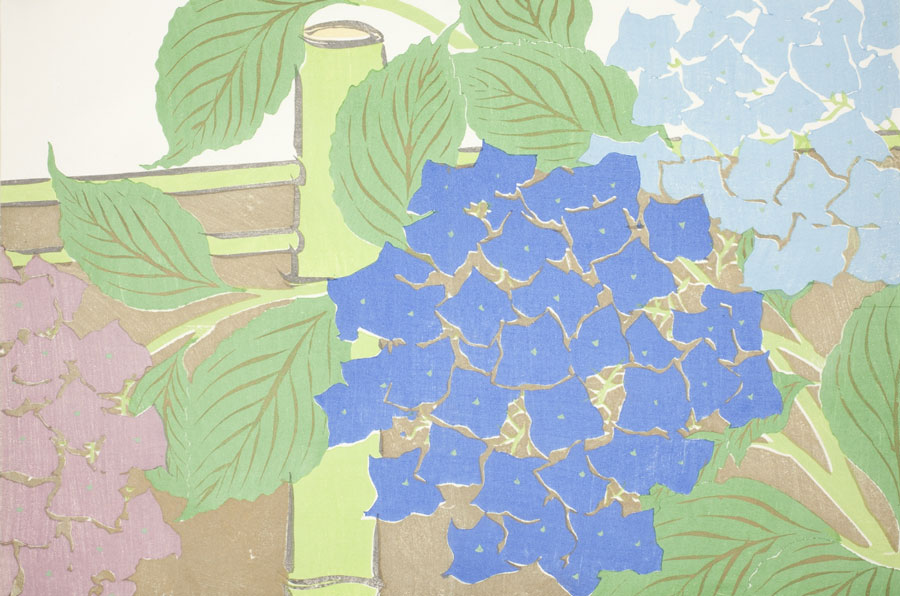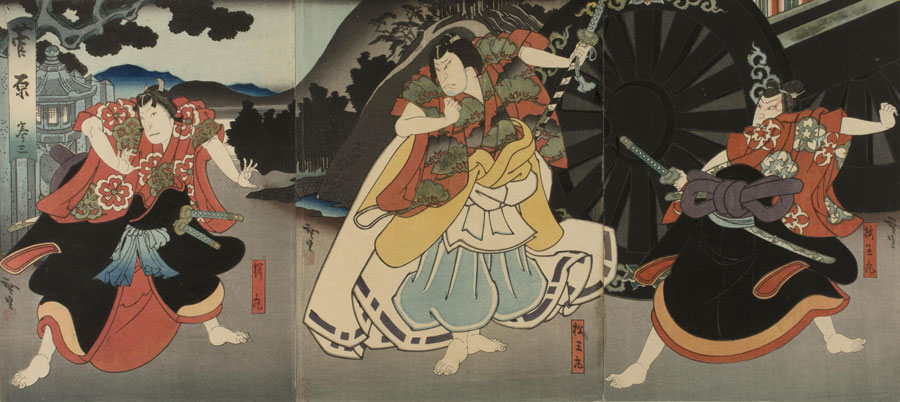
Kamisaka Sekka, Hydrangeas, from the series “World of Things (Momoyogusa),” 1904-1915. Mr. and Mrs. Hubert Fischer Fund. The Art Institute of Chicago
The Arranged Flower: Ikebana and Flora in Japanese Prints will be on view at the Art Institute of Chicago until July 9, 2023.
The artful display of flowers in Japanese culture known as ikebana (ike means “to arrange,” and bana or hana means “flowers”) likely originated with arrangements dedicated to Buddhist deities in temples, where the presentations sought to capture the beauty of paradise.
Japan’s first formal school of flower arranging developed in the 15th century, and ikebana remains a prominent and disciplined manifestation of a larger focus on nature in Japanese culture. The practice emphasizes the lines formed by the placement of the leaves, branches, and twigs and, when successful, conveys a sense of harmony among the plants, their vessels, and their settings.
The prints in this presentation largely date to the Edo period (1615–1868), when an intense interest in botany flourished hand-in-hand with ikebana at all levels of society. The arrangements shown are formal and informal, ordinary, and fantastic. What they share is an appreciation for natural beauty often overlooked in everyday life.

Mimasu Daigorō IV as Umeōmaru (right panel); Nakamura Utaemon IV as Matsuōmaru (center panel); and Jitsukawa Ensaburō as Sakuramaru (left panel), 1851, Konishi Hirosada (also called Gosōtei Hirosada) (Japanese, active 1826-1863, died c. 1865) Published by Daijin, Philadelphia Museum of Art.
Scandal & Virtue: Staging Kabuki in Osaka can be seen at the Philadelphia Museum of Art through July 24.
This installation examines the way Kabuki actor prints in Japan during the Edo period (1615—1868) functioned as conduits of fame and scandal. Explore the role of Kabuki actors as celebrities, the influence of the government, and fan culture. Grounded in Osaka’s actor print and Kabuki fan culture, the installation interweaves prints produced in Edo (modern-day Tokyo) to explore topics of censorship and fandom as well as tales of banishment and rivalry.
In 2008, Jack Shear gifted the museum 525 Osaka prints increasing opportunities for nuanced discussions about the unique print culture in Osaka during the Edo period. A selection of images from this gift alongside other actor prints from the museum’s collection encourages connecting with Edo period Kabuki fandom and celebrity culture by drawing parallels with contemporary fan culture.
